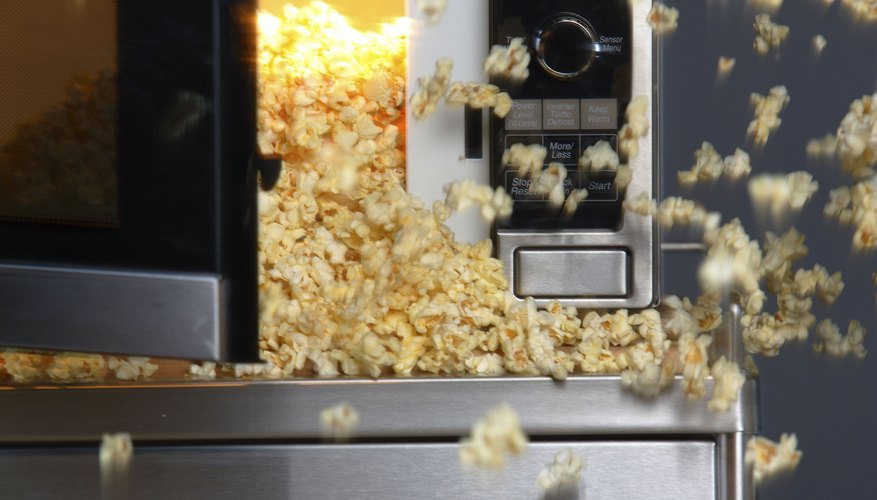Having a metal rack inside a microwave oven is as counterintuitive as it gets. For years we've been told to avoid putting food inside foil containers, at risk of the aluminium igniting and setting fire to the machine. Yet many of today's models come equipped with a metal cooking rack which provides valuable extra cooking space, and some models allow you to grill food beneath a heating element. Used properly, the rack is a safe addition to your oven.
Know your oven
There are two types of metal rack in a microwave. The first is a cooking rack designed to give you additional space in a traditional or "solo" microwave oven, which only uses microwaves to cook food. The second is a feature of a combination microwave with grill. These "combi" models typically have different settings allowing you to use the microwave facility together with an oven or a grill, and many have additional features such as multi-stage cooking which allows you to start cooking by one method and finish off with another. The purpose of the rack in combi models is to elevate the food closer to the heating element for faster browning.
- There are two types of metal rack in a microwave.
- These "combi" models typically have different settings allowing you to use the microwave facility together with an oven or a grill, and many have additional features such as multi-stage cooking which allows you to start cooking by one method and finish off with another.
Using a conventional rack
To use a rack in a solo oven, begin by consulting the user's manual. There might be restrictions on the type of container you can place on the rack and having two layers of food inside your microwave may double the cooking time. The manufacturer might advise you to store the rack outside the oven when it is not in use, as overexposing metal to microwaves causes it to arc, and could damage the oven. Only ever use the rack provided with the oven. It is specifically designed so that the gaps between the rods of the rack are large enough to prevent sparking and to allow the microwaves to pass through.
- To use a rack in a solo oven, begin by consulting the user's manual.
- The manufacturer might advise you to store the rack outside the oven when it is not in use, as overexposing metal to microwaves causes it to arc, and could damage the oven.
Using a grilling rack
Again, read the user's manual before use so that you know how your particular model works. Typically you will place your food on the grill rack, using a microwavable plate if the manual recommends this. Select the correct grill function, labelled "grill" or "combi" on the oven. Some models will require you to press the microwave "power" button if you are microwaving and browning food at the same time. Select the desired cooking time according to the operating instructions. Remember to remove grilled food from the oven with oven gloves - it will be hot. After cooking, clean the rack according to manufacturer's instructions. You should not have to clean the grill element, as the intense heat burns off splashes.
- Again, read the user's manual before use so that you know how your particular model works.
The science bit
A microwave works by exciting the electrons in atoms. When exposed to microwave energy, the electrons bounce around creating kinetic energy, which turns into heat. This heat cooks the food. The problem with putting metal into a microwave is that metal has particularly mobile electrons. A metal wrap such as aluminium foil is too thin for all that wiggling and jiggling, which causes the aluminium atoms to bang into each other, generating excess heat. When the foil reaches a certain temperature, it will catch fire. A metal rack is specifically shaped to avoid this problem. Microwave racks are thick and smooth with no sharp edges. This gives the electrons enough space to jiggle around. The metal atoms rarely knock into each other, and the rack does not heat up.
- A microwave works by exciting the electrons in atoms.
- A metal wrap such as aluminium foil is too thin for all that wiggling and jiggling, which causes the aluminium atoms to bang into each other, generating excess heat.
